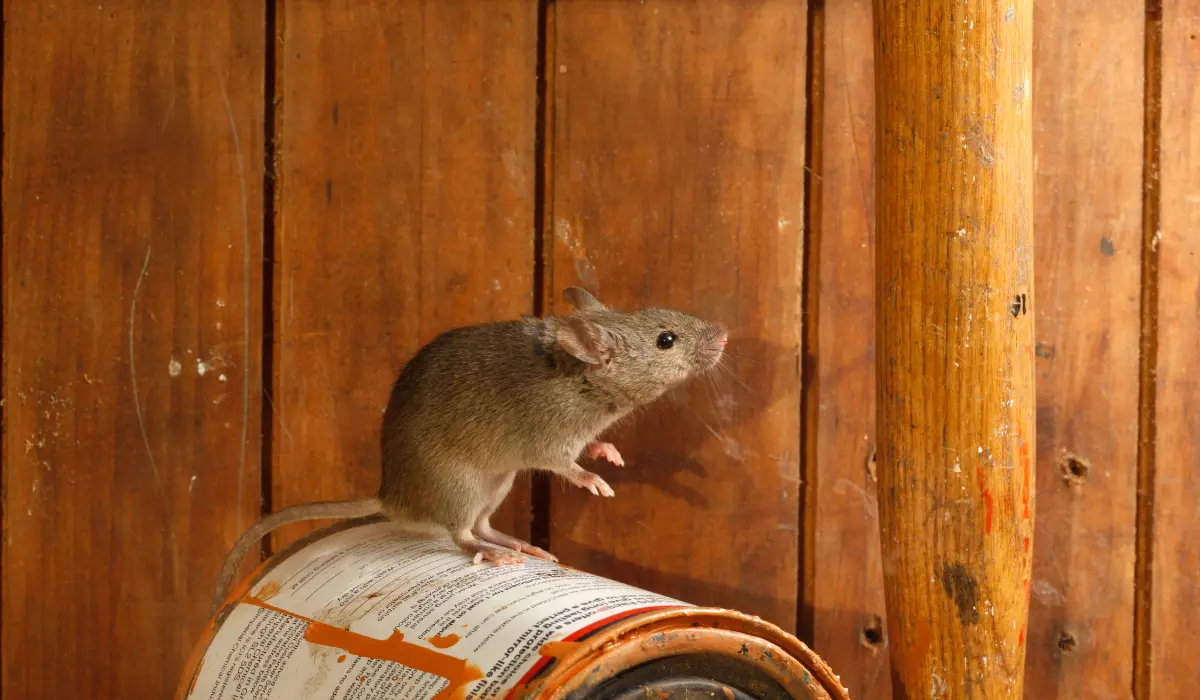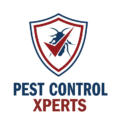Mice Treatments in Florida
Exterminator Services for Clearwater, Clearwater Beach, Largo, and Belleair Beach
Florida’s subtropical climate, with its moderate winters and high humidity, provides an enticing environment for rodents—particularly mice. These nimble creatures can infiltrate homes or businesses, exploiting any small opening, and reproduce at a rapid pace if unaddressed. For those in Clearwater, Clearwater Beach, Largo, or Belleair Beach, the mild year-round conditions mean mice rarely face natural dormancy that might slow them down. A minor oversight, like a crack near a foundation or leftover food scraps, can encourage a full-scale infestation if property owners and managers are not vigilant. This service page delves into the reasons mice prosper in Florida’s environment, how to detect a potential incursion, and the steps a professional mice exterminator employs in providing thorough mice treatments. By confronting the problem promptly, you shield your property from physical damage, health concerns, and unnecessary stress.
Why Mice Flourish in Florida
- Mild Winters
In colder regions, sub-freezing weather naturally curbs mouse populations. Florida’s winter rarely remains cold enough to disrupt rodent breeding cycles for long. Indoors, air conditioning or heating offers consistent temperatures that support mice activity year-round. As a result, a few rodents hiding behind walls or in storage areas can multiply steadily without a harsh climate forcing them into dormancy. - High Humidity and Frequent Rain
Mice thrive near water sources. Florida’s humidity, along with rain patterns, ensures that conditions remain moist in yards or around air-conditioning condensate lines. After heavy rains, mice might relocate indoors seeking dryness, often discovering unsealed gaps in doors, windows, or utility lines. - Abundant Food Options
Mice eat nearly any organic matter, from stored grains or cereals to crumbs under appliances. Tourist-friendly locales like Clearwater or Clearwater Beach can produce ample food waste—leftover snacks, unsecured trash bins—enabling mice to feed and breed rapidly. A single overlooked cabinet crumb can draw them in and encourage them to stay. - Minimal Seasonal Rest
In northern states, harsh winters might force rodents into slower reproductive periods. Florida’s climate doesn’t impose that extended break, so a minor infiltration can become an entrenched infestation if not addressed. Mice remain fully capable of breeding, requiring occupant diligence to prevent expansions. - Population Mobility
Between new residents moving in, short-term rentals, and frequent shipping of goods, southwestern Florida sees continuous occupant transitions. Mice can travel inside boxes or hidden in moving trucks, spreading from one structure to another. Once they detect a suitable environment—warm corners, leftover scraps—they settle unless forced out.

Indications of a Mice Infestation
- Droppings
Mouse droppings are small, dark, rice-shaped pellets found wherever mice feed or nest—like kitchen cupboards, behind refrigerators, or along baseboards. Fresh droppings appear moist, turning dull as they age. Their presence pinpoints where mice visit frequently. - Nocturnal Noises
Mice mostly move at night, searching for crumbs or nesting materials. Faint squeaks, nibbling, or scampering behind walls can signal rodents exploring. If occupant nights remain quiet enough, you might hear them skittering under floors or across attic beams. - Gnaw Marks
Mice chew incessantly to manage incisor growth. Detecting bite marks on plastic tubs, wooden edges, or cardboard packaging reveals where they access food or building materials. Sometimes small holes in cereal boxes or dried goods confirm direct feeding. - Nests and Shredded Material
Mice gather soft items—paper, cloth, insulation—to craft cozy nests hidden in corners, storage crates, or behind large appliances. A discovered nest, lined with droppings or bits of leftover food, strongly indicates a breeding site needing immediate removal. - Unusual Pet Behavior
Dogs or cats might intently watch an empty wall or paw at baseboards if they sense rodent scuttling. Observing your pet’s fixation on certain corners can lead you to droppings or gnaw marks revealing a hidden mouse presence.
Consequences of Untended Mice
- Structural Damage
Mice gnaw on beams, wires, or insulation, risking electrical shorts or even potential fire hazards if they strip wiring. Over time, these hidden chew marks degrade the structural integrity of walls, attics, or furnishings, leading to expensive repairs. - Health and Sanitation Issues
Rodent droppings and urine can spread bacteria or viruses, contaminating surfaces and foods. Mice may also carry fleas or ticks, which can transfer other diseases to pets or humans. Quickly eradicating them protects occupant well-being and cleanliness standards. - Persistent Stress
Living with the knowledge that rodents scurry behind walls or rummage in pantries erodes occupant comfort. People might fear encountering a mouse unexpectedly or worry about droppings in meal prep areas, leading to anxiety or sleeplessness. - Rapid Reproduction
A single pair of mice can produce multiple litters in a year, raising the population drastically in Florida’s mild environment. Delaying professional help offers these rodents extra time to spread from one room to multiple floors or even neighboring units in multi-family structures.

Why Opt for Professional Mice Treatments
- Detailed Property Evaluation
An experienced mice exterminator examines kitchens, basements, attics, yards, and everything in between to ascertain how mice infiltrate. This includes checking along plumbing, wiring, door frames, or unsealed utility lines for droppings or gnaw marks. Locating nest sites shapes an effective removal strategy. - Targeted Exclusion and Sealing
Because mice slip through holes as small as a dime, blocking their entry routes is crucial. Pest control experts use steel wool, caulk, or metal flashing around foundation cracks or pipes to prevent fresh arrivals once the existing population is removed. - Precision Baiting and Trapping
Technicians place snap traps, multi-catch devices, or tamper-resistant bait stations along walls or in corners mice frequent. With the right lure—peanut butter or seeds—these traps capture rodents quickly. If using baits, slow-acting poisons carried back to nests can remove entire colonies from behind walls. - Property Sanitation and occupant Guidance
Professionals not only exterminate but also advise on reorganization—like removing clutter or storing grains in sealed containers. They might suggest discarding cardboard piles or promptly cleaning spills so mice find no easy sustenance. Occupant diligence complements exterminator measures, ensuring mice cannot reestablish. - Follow-Up and Maintenance
Because mice reproduce quickly, a second visit or occupant-based monitoring helps confirm no hidden litters remain. If fresh droppings emerge or occupant sightings continue, additional baits or trap repositioning finalizes the process until the infestation is fully resolved.
Typical Methods for Mice Extermination
- Inspection and Mapping
The first step is thoroughly scouring potential hiding or feeding areas—behind appliances, under sinks, in basements, or yard corners. Droppings often indicate active routes. Identifying prime nest or feeding zones shapes the trap/bait layout. - Traps Indoors
Snap traps remain a classic tool, placed flush with walls or near holes mice chew for access. Bait stations can hold rodenticides that mice eat, eventually dying in their nest. The exterminator checks these regularly for disposal of caught rodents and to gauge rodent activity. - Exclusion Tactics
Encouraging property owners to fix dripping taps, seal foundation cracks, or mend torn screens denies mice the moisture or entry points they crave. Without these corrections, new mice could wander in after the current ones are eliminated. - Outdoor Perimeter Measures
Some rodents approach from yards or neighboring lots. Setting bait stations outside helps intercept them before they venture indoors. Removing yard debris or stacked wood near foundations also reduces rodent harborage. - Monitoring
Sticky traps or live-capture devices placed discreetly can help detect residual mice or new arrivals. Occupants watch for droppings or nibble marks in previously cleared areas. Early detection fosters minimal follow-up if new mice appear.
- Inspection and Mapping

Coverage Areas: Clearwater, Clearwater Beach, Largo, and Belleair Beach
Clearwater: A city bustling with tourism and a stable year-round population. Mice often find leftover food scraps in restaurant districts or slip into older homes with foundation cracks. Routine property checks plus occupant training hamper rodent infiltration.
Clearwater Beach: Known worldwide for beautiful beaches, short-term rentals, and heavy tourism, making occupant turnover and consistent travel, both of which can inadvertently welcome rodents if no occupant remains watchful. Quick occupant collaboration plus thorough sealing of cracks ensures mice cannot establish nest sites in unoccupied times.
Largo: With older neighborhoods and new developments side by side, Largo sees ongoing expansions that might disrupt rodent habitats. Mice forced from land clearing may enter nearby dwellings, raising the need for occupant vigilance and swift professional help if droppings appear.
Belleair Beach: Another serene waterfront location with seasonal occupancy and occasional short-term rentals. Rodents can exploit seldom-used corners or neglected yard debris. Consistent occupant checks for droppings or gnaw marks hamper mice from building safe nests undetected.
Why Our Mice Treatments Excel
- Florida-Centric Knowledge
Because southwestern Florida’s winter rarely curtails mice, we design solutions addressing year-round rodent breeding cycles. By combining occupant suggestions—like discarding clutter, sealing food—and robust trap/bait approaches, we eliminate mice thoroughly, even in mild, ongoing breeding conditions. - Precision and Eco-Awareness
We focus on corners, behind stoves, or near utility lines—common rodent highways—rather than saturating entire rooms. Occupants, children, and pets remain safer this way, while mice crossing treated areas or bait stations are effectively neutralized. - Long-Term Prevention Emphasis
Removing present mice is essential, but occupant-led improvements seal the deal: storing cereals properly, promptly handling garbage, or discarding cardboard piles. Rodents lose both food and nesting sites, reducing the chance of re-invasion. - Follow-Up
Because mice breed quickly, scheduling a second or third check ensures no leftover pups mature unseen. If occupant sightings linger, we adapt the trap or bait layout until no mice remain, ensuring complete closure of the infestation.
Next Steps
Finding rodent droppings near your cereal boxes, hearing scratching sounds in the walls at night, or noticing chewed wires or furniture edges? Contact us to learn more or schedule your service. Our mice treatments in Clearwater, Clearwater Beach, Largo, and Belleair Beach identify rodent entry points, exterminate current infestations, and help owners maintain rodent-free conditions. By employing a seasoned exterminator, you shield your property from chewed wiring, droppings that risk health, and the stress of hidden rodents rummaging behind walls.
Quick action spares you from bigger troubles, like structural damage or large-scale contamination. With integrated strategies—baits, traps, occupant housekeeping, sealing cracks—mice cannot persist unseen. It’s the surest way to reclaim calm nights and secure storage for all valuables or food items.
Sustaining a Mice-Free Lifestyle
After eradicating mice, a few consistent tactics keep them at bay:
- Secure Food: Place cereals, pet kibble, or leftover snacks in sealed containers. Immediately wipe crumbs and spills. Mice wander off if no easy meals remain.
- Eliminate Clutter: Minimizing cardboard stacks, unused clothing piles, or yard debris deprives rodents of hiding spots. Tidy garages or basements hamper nesting.
- Fix Leaks: Mice need water. Repair dripping faucets, AC condensation lines, or roof leaks. Keep sinks dry overnight.
- Proper Trash Storage: Keep lids on garbage bins indoors and out. Avoid letting trash accumulate in corners or near building exteriors, especially with open or loose-fitting lids.
- Check Up Periodically: Peek behind appliances or in corners for fresh droppings or chew marks every few months. Early detection cuts off small reappearances before they balloon.
Blending occupant vigilance with thorough professional services ensures southwestern Florida homes and businesses remain rodent-free for the long haul. With mild winters, abundant resources, and busy tourism cycles, mice can easily exploit unprepared properties. A synergy of occupant diligence—cleaning thoroughly, sealing cracks—and professional exterminator solutions fosters a calm environment free from scurrying mice, droppings, or nightly disturbances.
